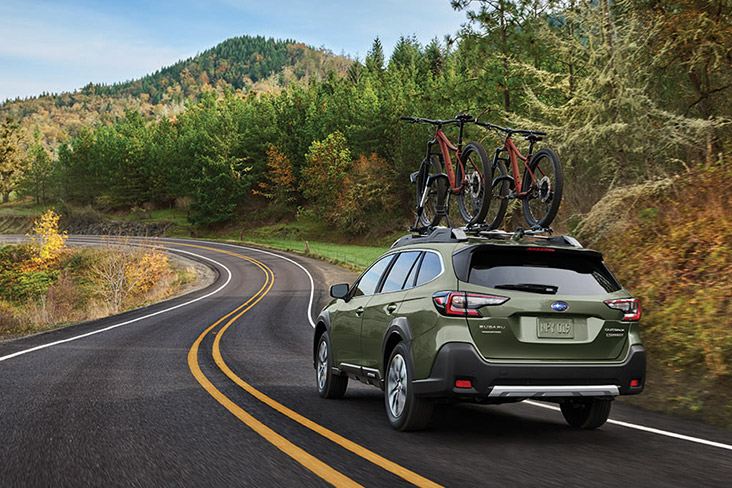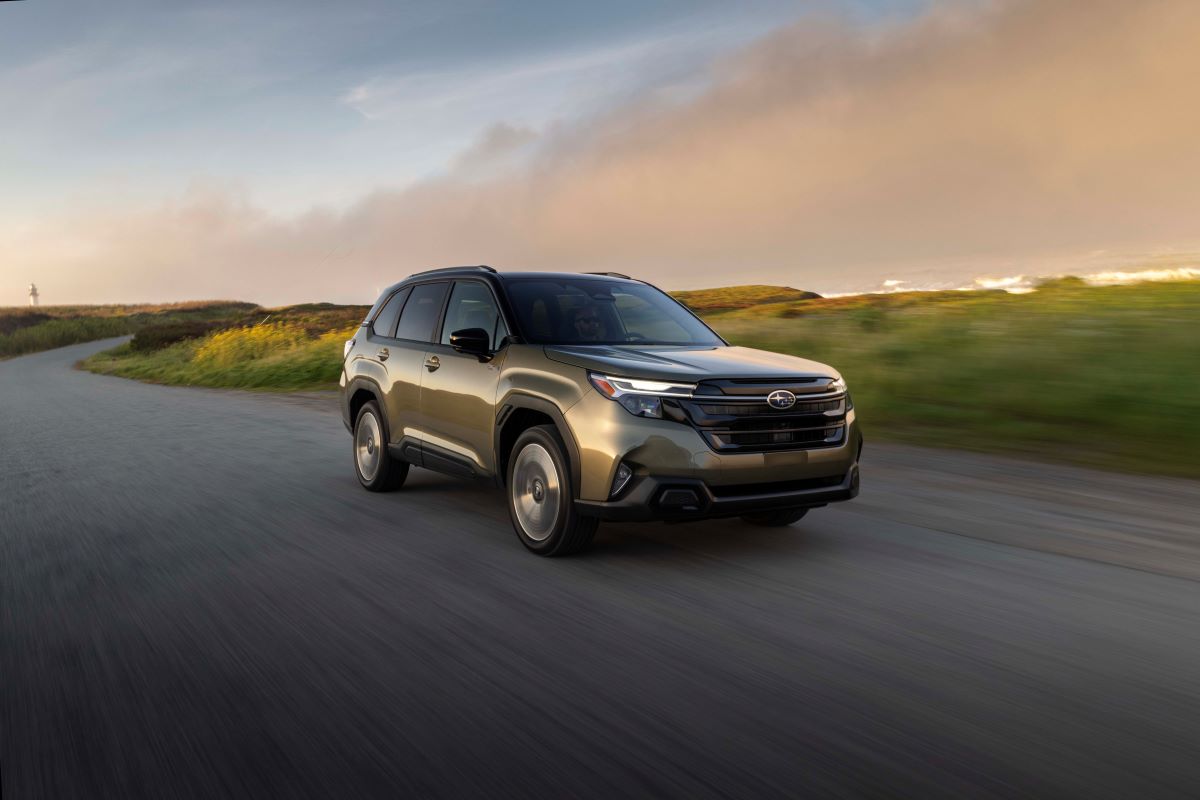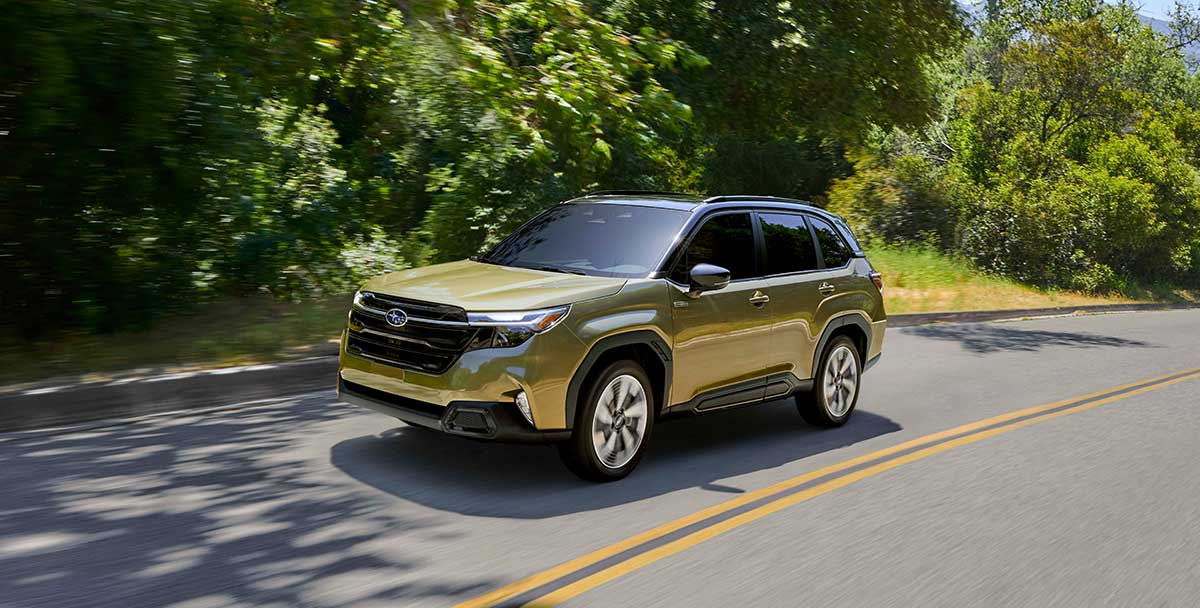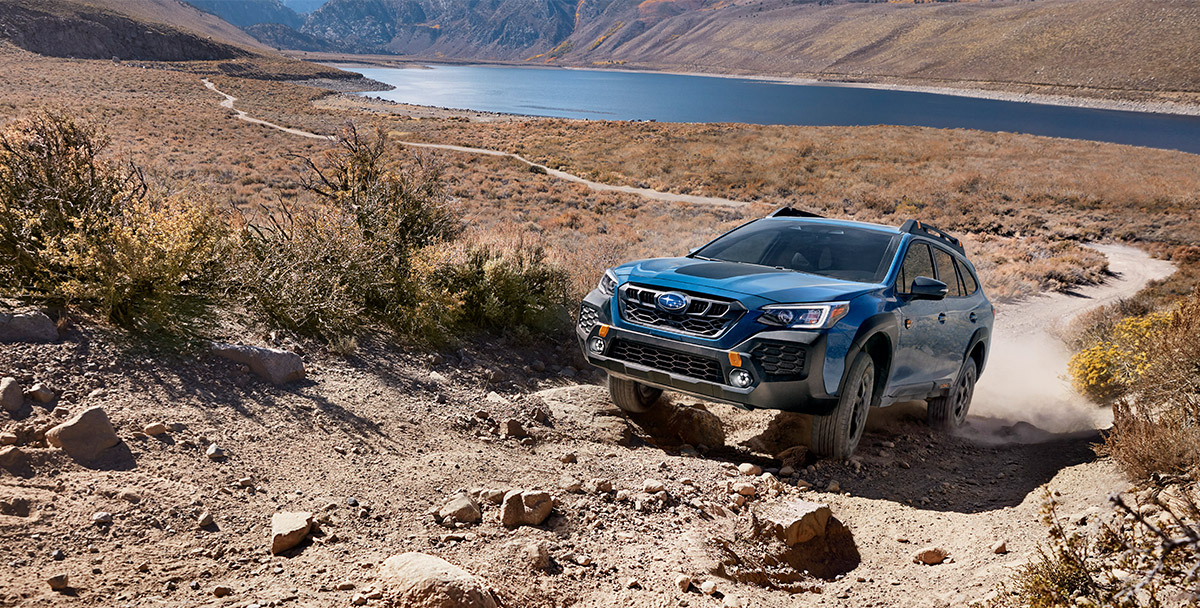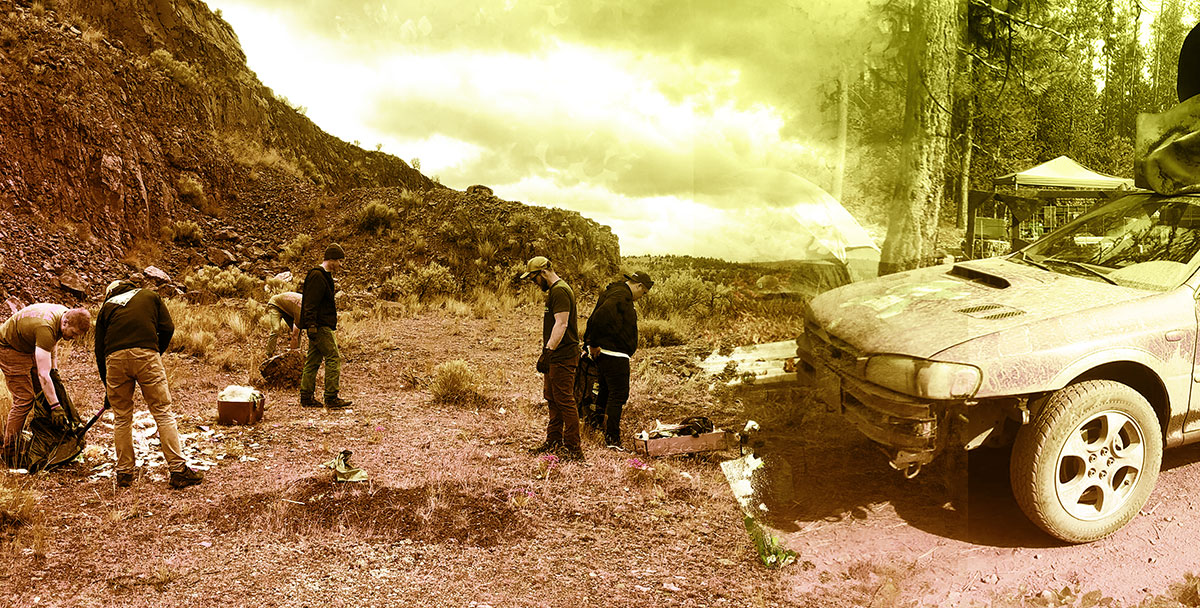The 2025 model year marks the 30th anniversary of the Subaru Outback, and in June 2024, Subaru announced the sale of their 3 millionth Outback. The year before, the sixth-generation Outback was the bestselling Subaru product, with 161,814 units sold.
Americans love these vehicles, and they have since the 1995 Outback debuted at the New York Auto Show in 1994.
But despite its overwhelming popularity, there’s still a lot you probably don’t know about the Outback in the three decades since production began. We dug through the archives to come up with some interesting and fun facts about the history of this groundbreaking vehicle.
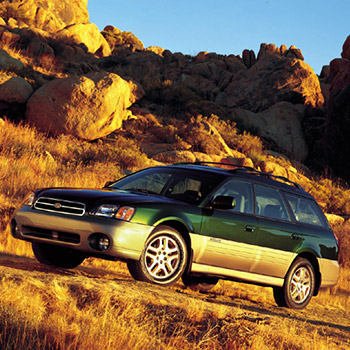
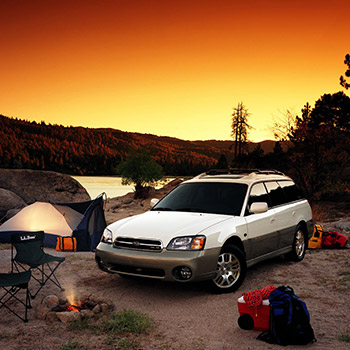
1. The First Outback Was a Legacy Trim Level
When you purchase an Outback for the 2025 model year, it’s a stand-alone model, separate from anything else in the Subaru lineup. But when it was first introduced in the 1995 model year, it was as a trim level of the Legacy Wagon called the Legacy Outback.
The Legacy brochure in 1995 lays out the entire philosophy of the Outback:
Why forsake comfort, safety and performance for versatility? It doesn’t really make much sense, does it? Especially when only a fraction of SUV owners take their vehicles off-road. After all, if you’re not planning to scale Mt. Everest, 15 miles per gallon in a truck is a pretty big price to pay. To that, we offer a more civilized approach to adventure: The Outback Wagon. With all the refined engineering of the new Subaru Legacy, it’s a beautiful way to see the great outdoors.
– 1995 Subaru Legacy Brochure
Who could have predicted at the time that the Outback would one day emerge as one of the best SUVs for off-roading in the Subaru lineup?
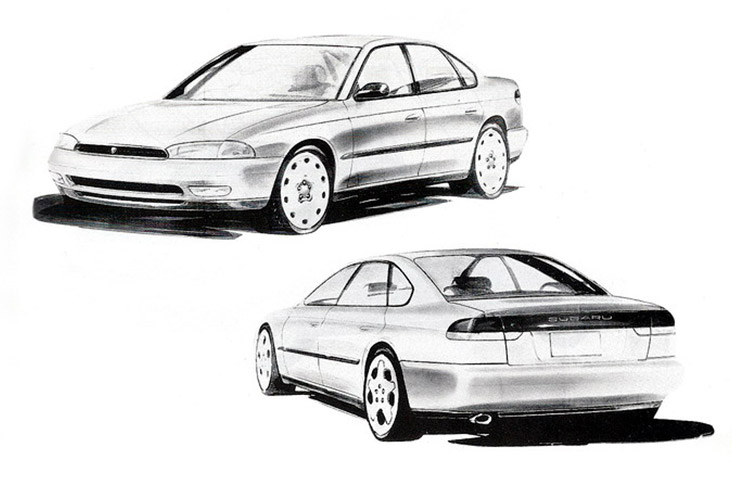
2. The French Connection: Olivier Boulay Designed the Second-Generation Legacy
The early 1990s were a challenging period for Subaru of America. Experiments with luxury sports cars like the SVX, sporty coupes like the XT Coupe and compact trucks like the BRAT got attention and showed the brand’s innovative spirit but didn’t result in a large sales volume. Then came the 1995 Legacy and, shortly afterward, all-wheel drive as a standard feature across the board – completely changing Subaru of America’s trajectory.
The second-generation Legacy – which would be the basis for the Outback trim and, in 1996, a standalone Outback model – was designed in Japan by a French automotive designer named Olivier Boulay, who was on a three-year contract with Subaru of America parent company then known as Fuji Heavy Industries.
“Japan was, in the ’80s and ’90s, the most dynamic country in the automotive industry,” Boulay told CardesignPics China. “Therefore, I was quite curious about extending my knowledge about this part of the world.”
In sedan and wagon form, the second-generation Legacy was one of just two cars Boulay ever worked on for Subaru. After his contract expired, Boulay would go on to lead one of the world’s most advanced automotive design studios and to launch the most exclusive luxury car on the planet at the time.
3. SUV? What’s an SUV?
In the 1995 model year Legacy brochure, the idea of an SUV was so new that the copy had to spell out what the acronym meant, making a distinction that’s still true between the Outback and the truck-based SUVs that dominated the marketplace in 1995:
“The feeling of safety when driving a Sport Utility Vehicle (SUV) may not be all it’s cracked up to be. Unlike cars, truck-based SUVs don’t have to meet all Federal Government passenger-car safety standards. In other words, the strong, secure SUV may be nothing more of an illusion.”
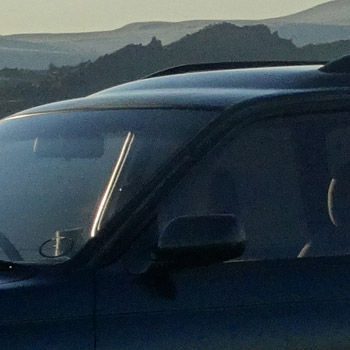
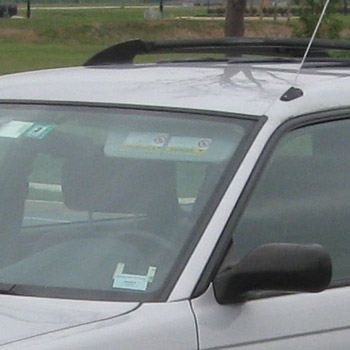
4. The 1995 Subaru Outback Raised the Roof
For the 1995 model year, there were two different versions of the second-generation Legacy Wagon: the standard stepped-roof wagon, known internally by the chassis code “BG,” and the flat-roof wagon chassis code “BK.”
You can identify which roof version of second-generation Legacy Wagon you’re looking at thanks to the vehicle identification number (VIN): the fourth and fifth digits will either be “BG” for the stepped roof or “BK” for the flat roof.
All the Outback Wagons from 1995 to 1999 in the U.S. were the stepped roof, which provided a bit more cargo and passenger headroom inside.
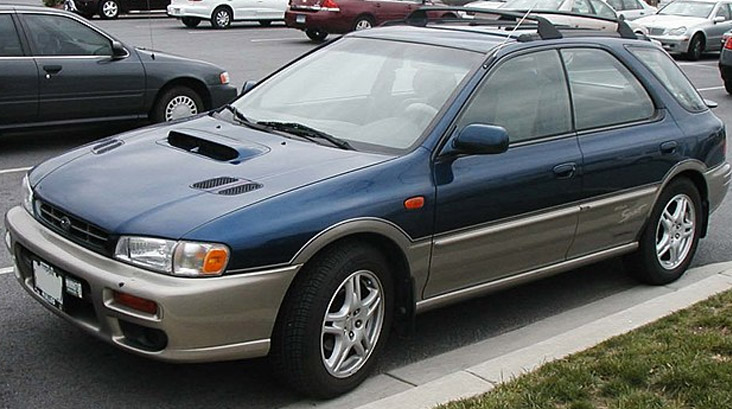
5. Enter the Subaru Impreza Outback Sport
By 1996 – just its second year in production – it was obvious to everyone that the Subaru Outback was hot. That year, the vehicle rated not only its own 12-page brochure but also a second 16-page brochure titled “The Beauty of Great Press,” which was a collection of articles about the 1996 Legacy Outback.
If the theme made sense for the Legacy, why wouldn’t it make sense for the Impreza? In 1996, Subaru also introduced the Subaru Impreza Outback Sport, taking all the things that made the Legacy Outback popular and transferring those to the smaller, more nimble Impreza.
Introduced in the first generation of the Subaru Impreza, the Outback Sport proved popular enough to carry through the second- and third-generation Impreza lineup, until it was replaced entirely by the wildly popular XV Crosstrek and later Crosstrek models, which have parried with the Outback for the No. 1 selling Subaru slot in the United States since its introduction.
6. There’s an Outback 30th Anniversary Edition
There’s an Outback 30th Anniversary Edition, but it doesn’t celebrate the 30th anniversary of the Outback; it celebrates the 30th anniversary of Subaru of America.
Introduced in 1998 – just four model years into the existence of the Outback – the 30th Anniversary Edition models were only offered in the Limited trim level and featured Sandstone lower cladding, as opposed to the more familiar Slate Gray, along with 30th Anniversary badging near the left front wheel.
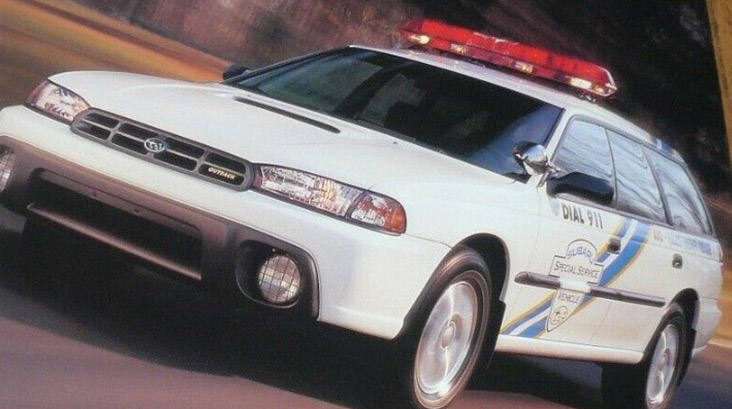
7. Subaru Offered a Police Car in 1999
For one year only, 1999, Subaru offered the Outback SSV, or Special Service Vehicle. It was designed for use by police, firefighters and other emergency services.
It was nearly identical to the civilian Outback, with a few cosmetic and mechanical differences; for example, it’s the only Outback that never featured a roof rack, allowing emergency departments to easily attach a light bar to the roof. It deleted the stereo and antenna as well.
When the Michigan State Police evaluated the Subaru Outback SSV against an array of competitive vehicles, it stood head and shoulders over the competition in some key attributes. That year, the most popular police vehicle was the Ford Crown Victoria, which only offered city fuel economy of 16 mpg in EPA testing. The Outback SSV was evaluated at nearly 21 mpg city, even with more cargo volume inside and standard all-wheel drive.
Stopping distance was also an Outback SSV win: The Michigan State Police stopped an Outback SSV within an average of 140.5 feet at 60 miles per hour. The rear-wheel drive Chevrolet Tahoe took another 33 feet, or about two and a half car lengths.
According to Charles Ballard, Product & Technology Communications Specialist at Subaru of America, just 64 Outback SSV models were produced that year.
8. Co-Branding and the Subaru Outback
Subaru of America certainly didn’t invent co-branding. AMC, for example, had a Levi’s Edition of its Gremlin, Hornet and Pacer, and Lincoln had long relationships with designers like Bill Blass, Emilio Pucci, Givenchy and Cartier.
Similarly, the Subaru Outback partnered with a couple of unique brand names that served to elevate both the carmaker and the brand it promoted.
The first was the Subaru Outback L.L.Bean® Edition. Introduced in the 2000 model year, the Outback H6-3.0 L.L.Bean Edition was the pinnacle of the Outback family, featuring a 212-hp 3.0-liter six-cylinder Boxer Engine, an in-dash six-CD changer, leather-trimmed seats and dual moonroofs.
The 2001 Subaru Outback H6-3.0 VDC introduced the new Vehicle Dynamics Control system, which integrated traction control with stability control for better road-holding capability in weather conditions like sleet, snow and rain or when making emergency maneuvers.
That trim level also included the first appearance of a McIntosh-branded stereo system offered by an auto manufacturer. McIntosh was – and still is – a brand prized by audiophiles, whose least expensive integrated home amplifier costs about $3,000.
Over the course of its 30-year history, the Subaru Outback attracted adventure enthusiasts from the get-go, and we’ve highlighted a few interesting facts. But there’s much we didn’t cover, including the high-tech features in the sixth-generation 2025 Subaru Outback. Visit Subaru.com for more details.
